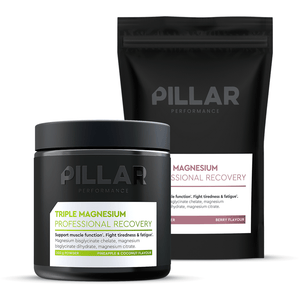It’s your choice - with our knowledge.

Product Insights
Discover more about the products in this article

Massage aux herbes Nature's Kiss
Featured Products
Nager sans effort : comment récupérer rapidement des douleurs aux épaules et aux articulations
La natation est un excellent exercice à faible impact qui développe l'endurance et la force. Cependant, comme tout sport, elle peut entraîner des douleurs, notamment aux épaules et aux articulations. Heureusement, il existe des moyens efficaces pour récupérer rapidement et minimiser le risque de douleurs à long terme.
Comprendre les douleurs aux épaules et aux articulations chez les nageurs
Pourquoi les nageurs ressentent de la douleur
La natation repose fortement sur la rotation des épaules et les mouvements répétitifs des bras, ce qui peut entraîner des blessures par surmenage. Les causes courantes de douleur sont :
- Entorse de la coiffe des rotateurs : ces muscles stabilisent l’épaule mais peuvent devenir douloureux en cas de nage continue.
- Compression articulaire : le mouvement constant des bras peut exercer une pression sur les articulations de l’épaule et du coude, entraînant une inflammation.
Techniques de récupération pour les nageurs
1. Exercices d'étirement et de mobilité
Étirements avant et après la natation
Effectuez des étirements avant et après votre séance de natation pour réduire la raideur musculaire et améliorer la souplesse. De simples étirements des épaules et des balancements dynamiques des bras peuvent améliorer la circulation sanguine vers les muscles.
Exercices de mobilité des épaules
Utilisez des exercices comme les glissades murales et les étirements avec bandes de résistance pour renforcer la stabilité des épaules et améliorer l'amplitude de mouvement. Ces exercices aident à prévenir les raideurs et à améliorer la coordination musculaire.
2. Exercices de renforcement pour la stabilité des épaules
Construire une coiffe des rotateurs solide
Cibler la coiffe des rotateurs avec des exercices spécifiques peut contribuer à prévenir les blessures. Essayez des exercices comme les développés épaules, les rotations externes avec bandes de résistance et les soulevés d'haltères pour renforcer vos épaules.
Exercices pour le tronc et le dos
Un tronc et un dos forts réduisent la tension sur les épaules en répartissant uniformément la charge de travail. Intégrez des exercices comme la planche et les extensions du dos pour améliorer votre posture de nage.
3. Pratiques de repos et de récupération
Prenez des pauses et des jours de repos
Écoutez votre corps. Prévoyez des jours de repos pour permettre aux muscles de récupérer, surtout après des séances de natation intensives. Cela permet d'éviter les blessures dues à une utilisation excessive.
Thérapie par le froid
Appliquer des compresses froides ou des poches de glace sur les zones douloureuses après la baignade peut réduire l'inflammation et soulager la douleur. Utilisez la thérapie par la glace pendant 10 à 15 minutes au besoin.
Aides efficaces à la récupération
Massage et massages musculaires
Pensez à utiliser des massages ou des frictions musculaires comme le massage Nature's Kiss pour soulager les muscles tendus. La massothérapie peut également améliorer la circulation sanguine et réduire les tensions dans les zones douloureuses.
Supports de compression
Le port d’un manchon ou d’une enveloppe de compression autour de l’épaule peut offrir un soutien supplémentaire et réduire les vibrations musculaires, ce qui peut entraîner des douleurs.
Suppléments anti-inflammatoires
Si les douleurs articulaires sont récurrentes, des compléments anti-inflammatoires comme PILLAR Triple Magnésium peuvent favoriser la guérison. Consultez toujours un professionnel de santé avant de commencer tout nouveau traitement.
Conseils pour prévenir les douleurs aux épaules et aux articulations
Se concentrer sur la technique
Une bonne technique de nage réduit les risques de foulures. Veillez à une position fluide et évitez de trop vous pencher à chaque mouvement.
Échauffez-vous progressivement
L’échauffement augmente progressivement le flux sanguin et la température musculaire, ce qui prépare le corps à la natation et réduit les risques de blessures.
Augmenter lentement l'intensité
Si vous augmentez l'intensité ou la distance de vos séances de natation, faites-le progressivement. Des changements brusques peuvent entraîner des blessures dues à une surutilisation ; progressez donc lentement pour laisser à votre corps le temps de s'adapter.
Résumé
Se remettre de douleurs aux épaules et aux articulations n'est pas forcément difficile. En intégrant des étirements, des exercices de musculation et des pratiques de récupération adaptées, vous pouvez soulager la douleur et continuer à nager confortablement. Privilégier une bonne technique et être à l'écoute de votre corps vous aidera à prévenir les blessures et à profiter de la natation sans effort.
It’s your choice - with our knowledge.







































































































